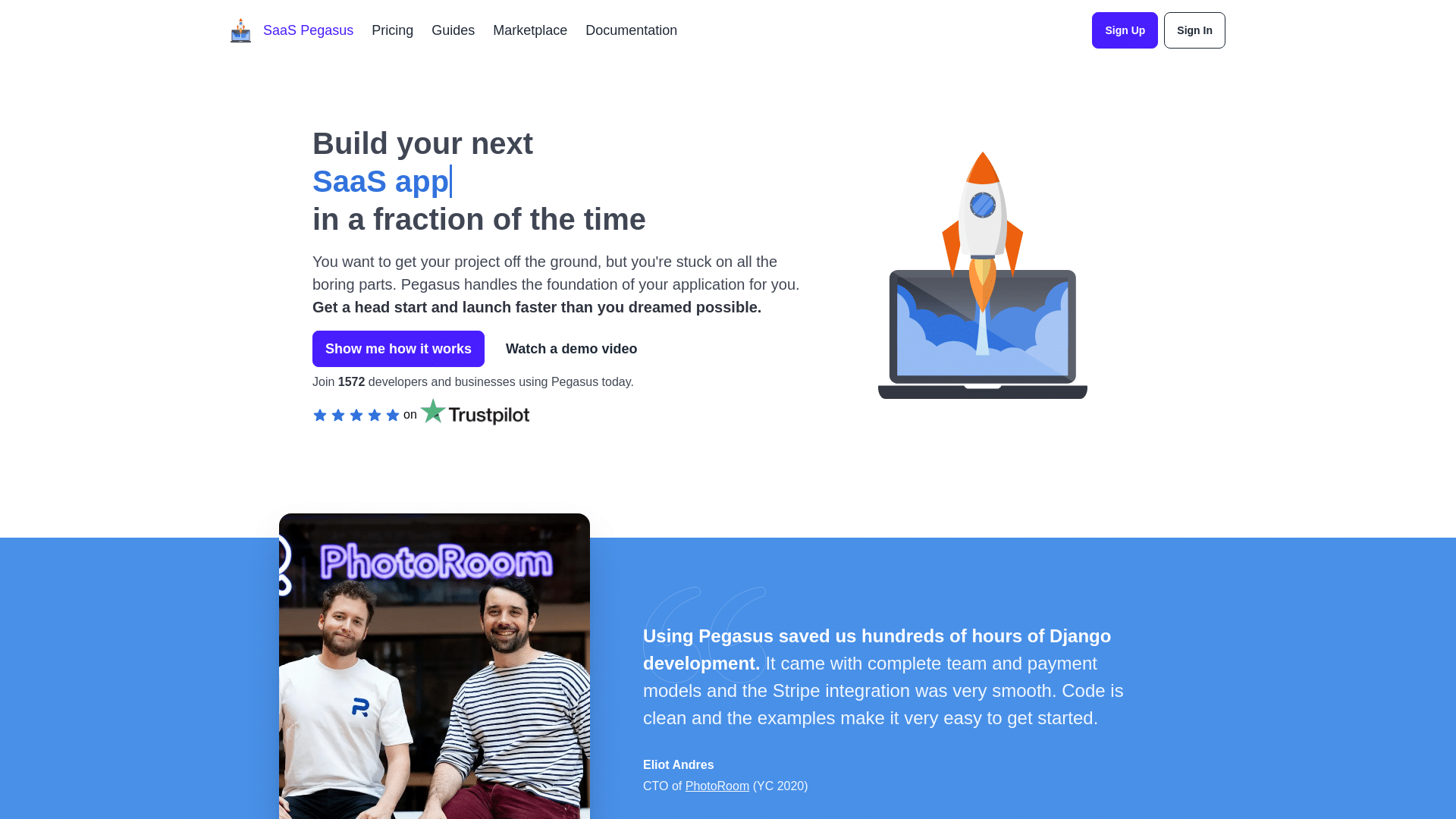
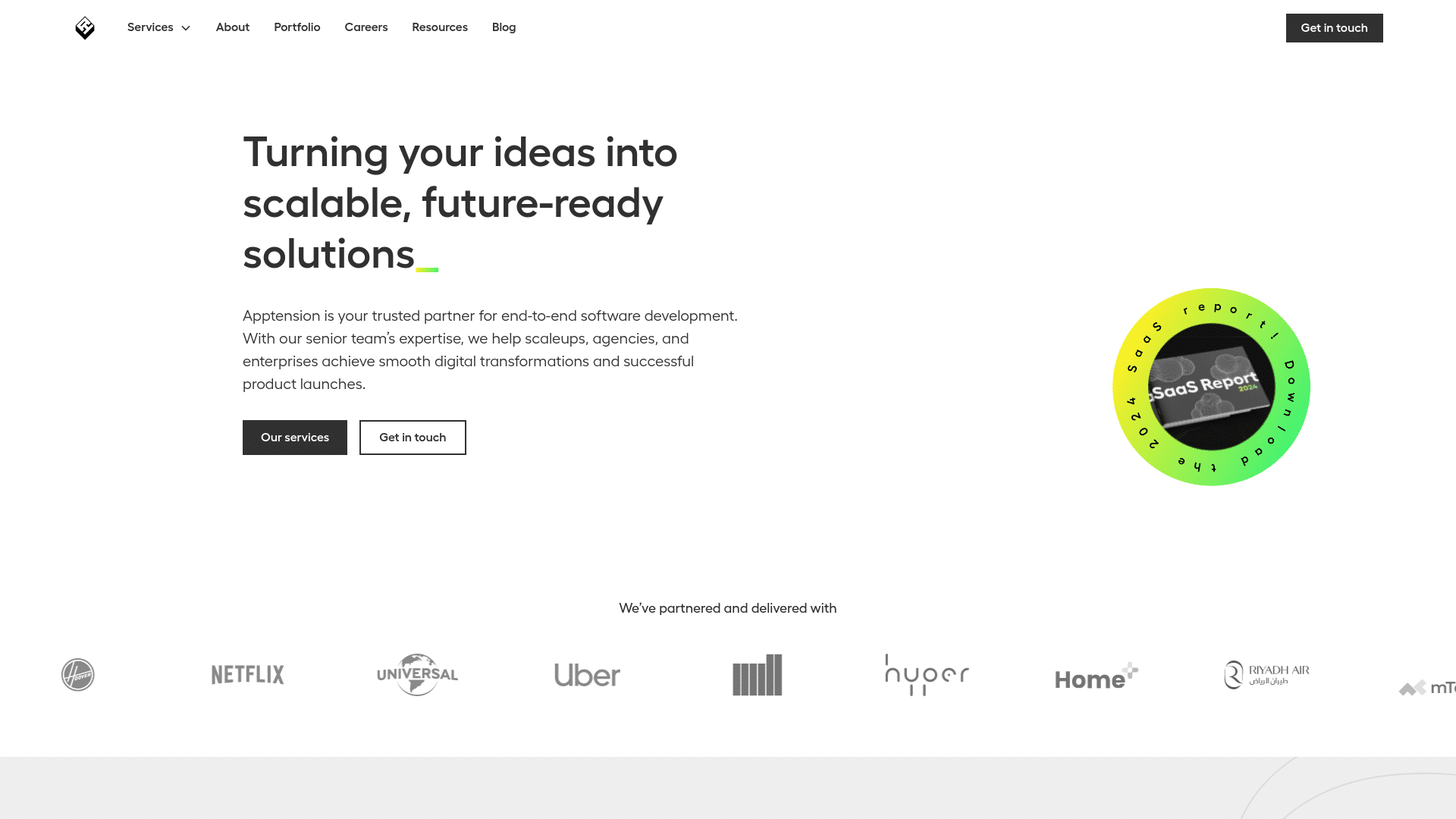
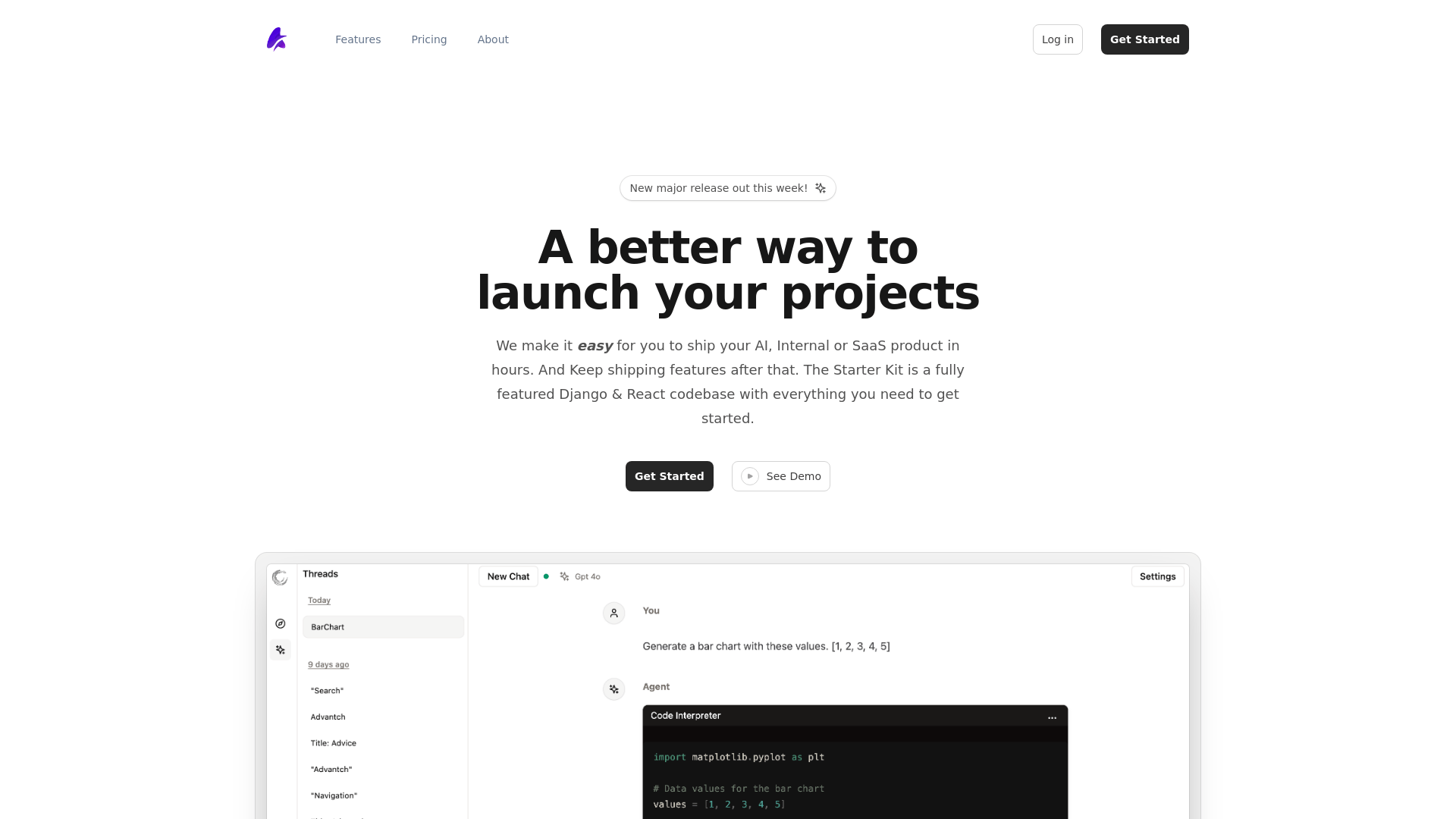
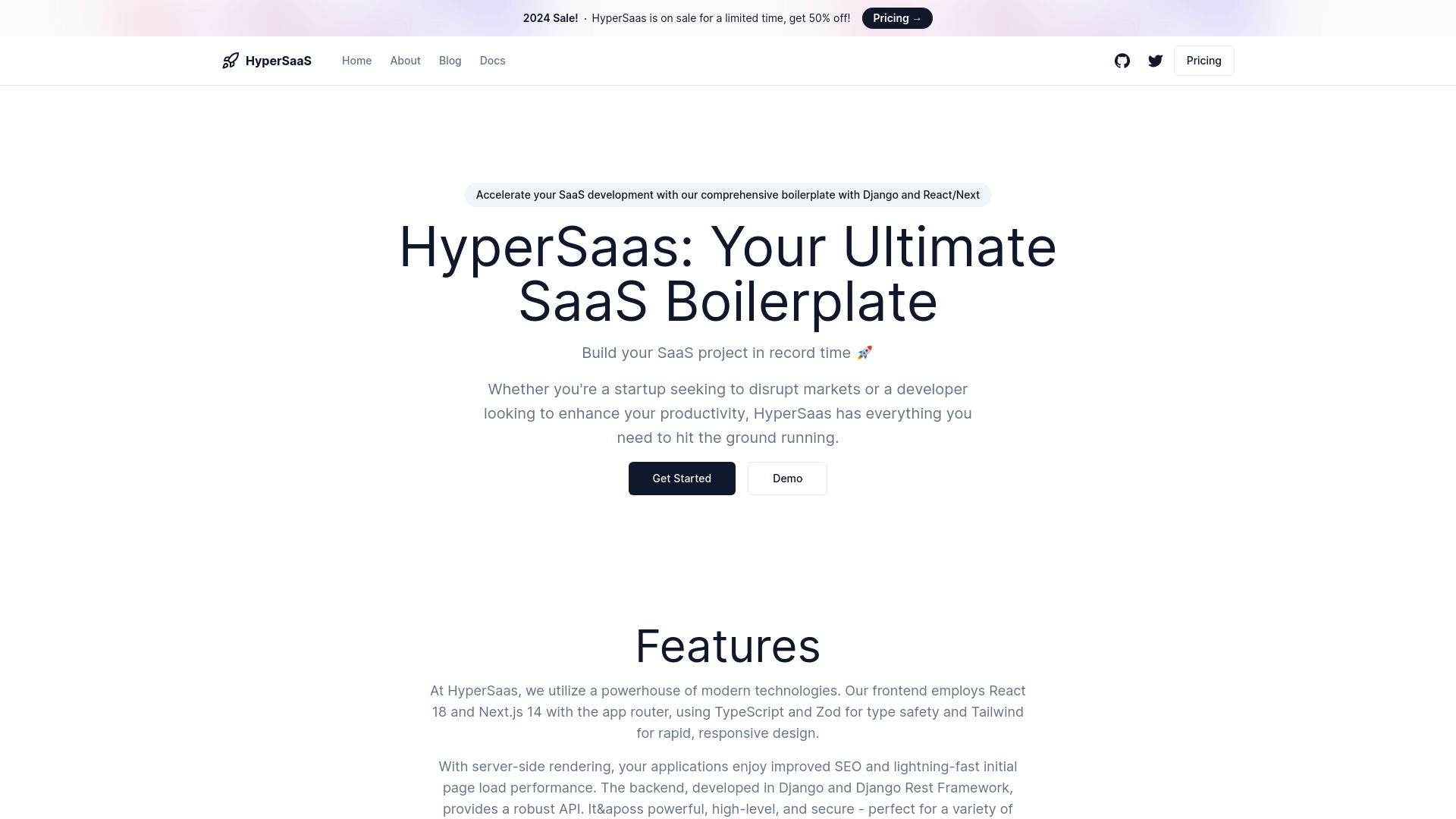
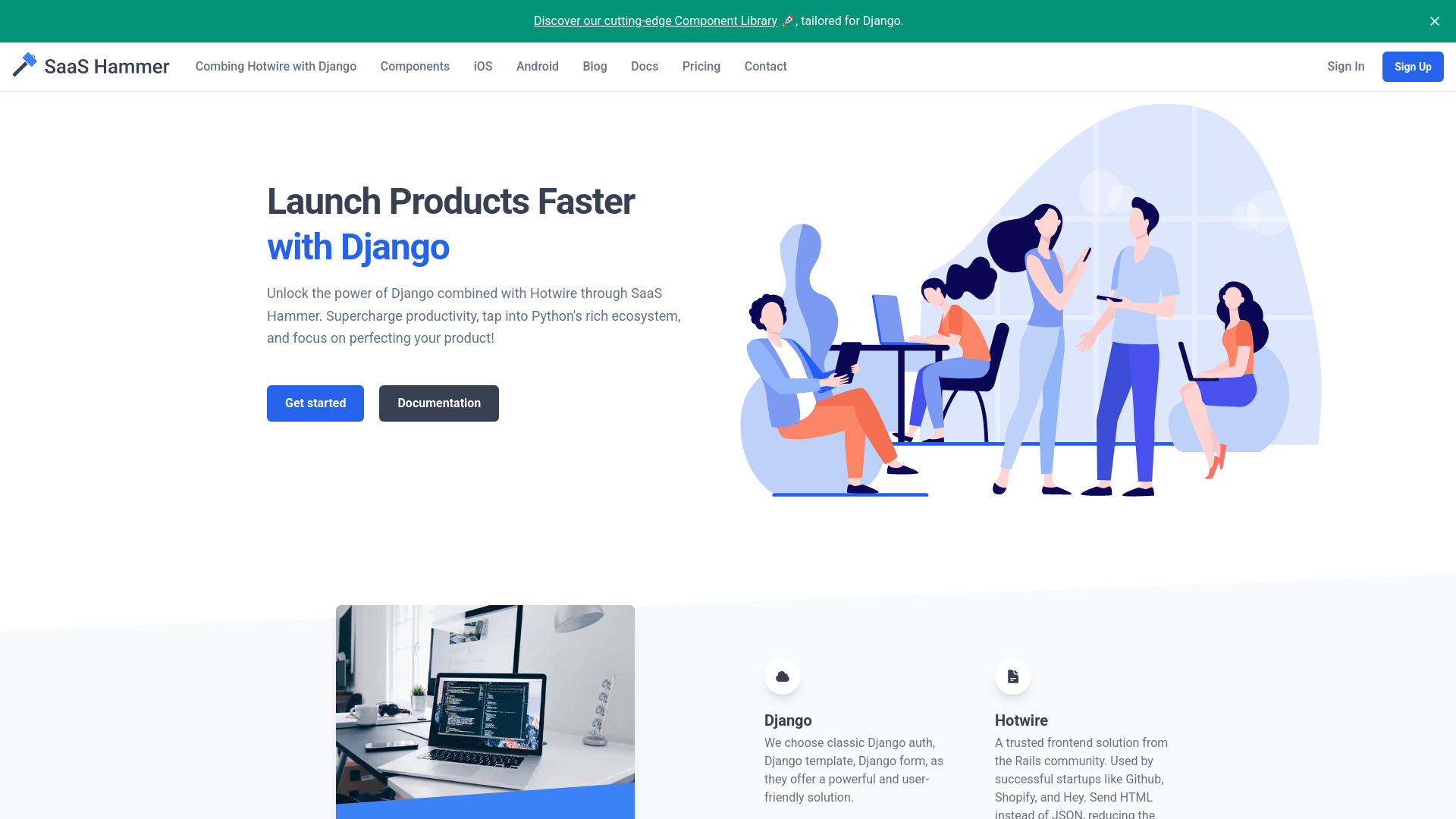
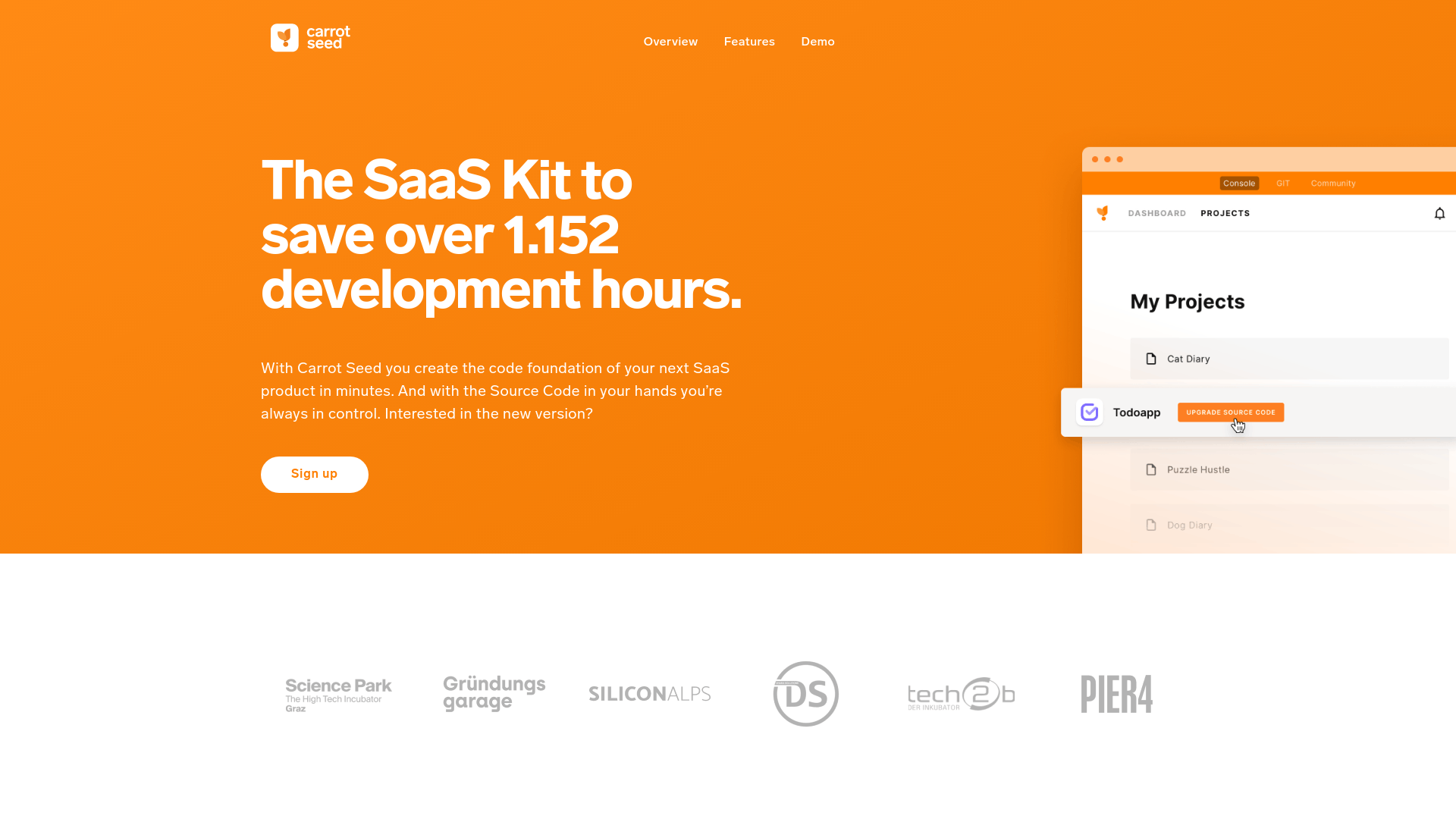
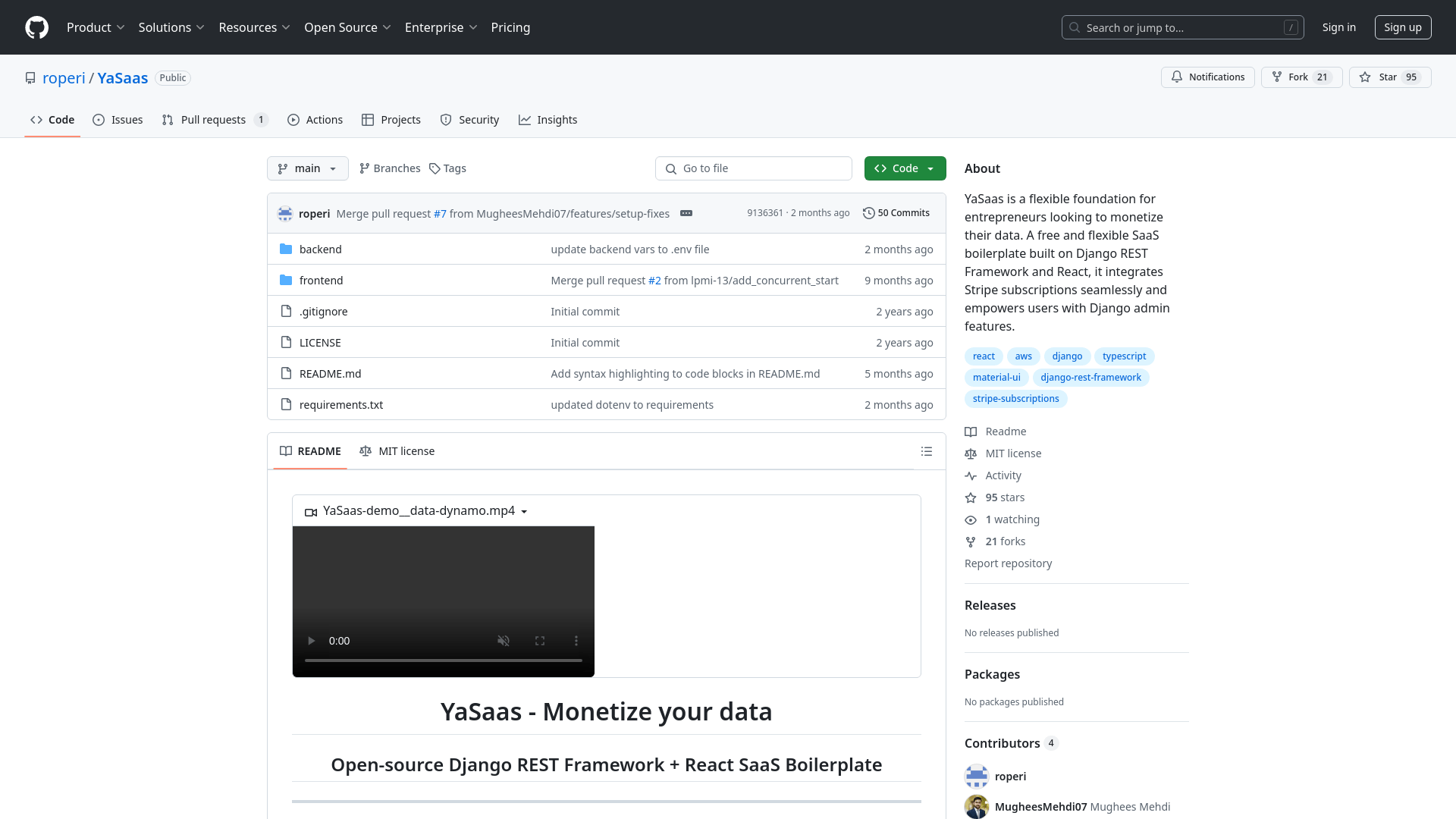
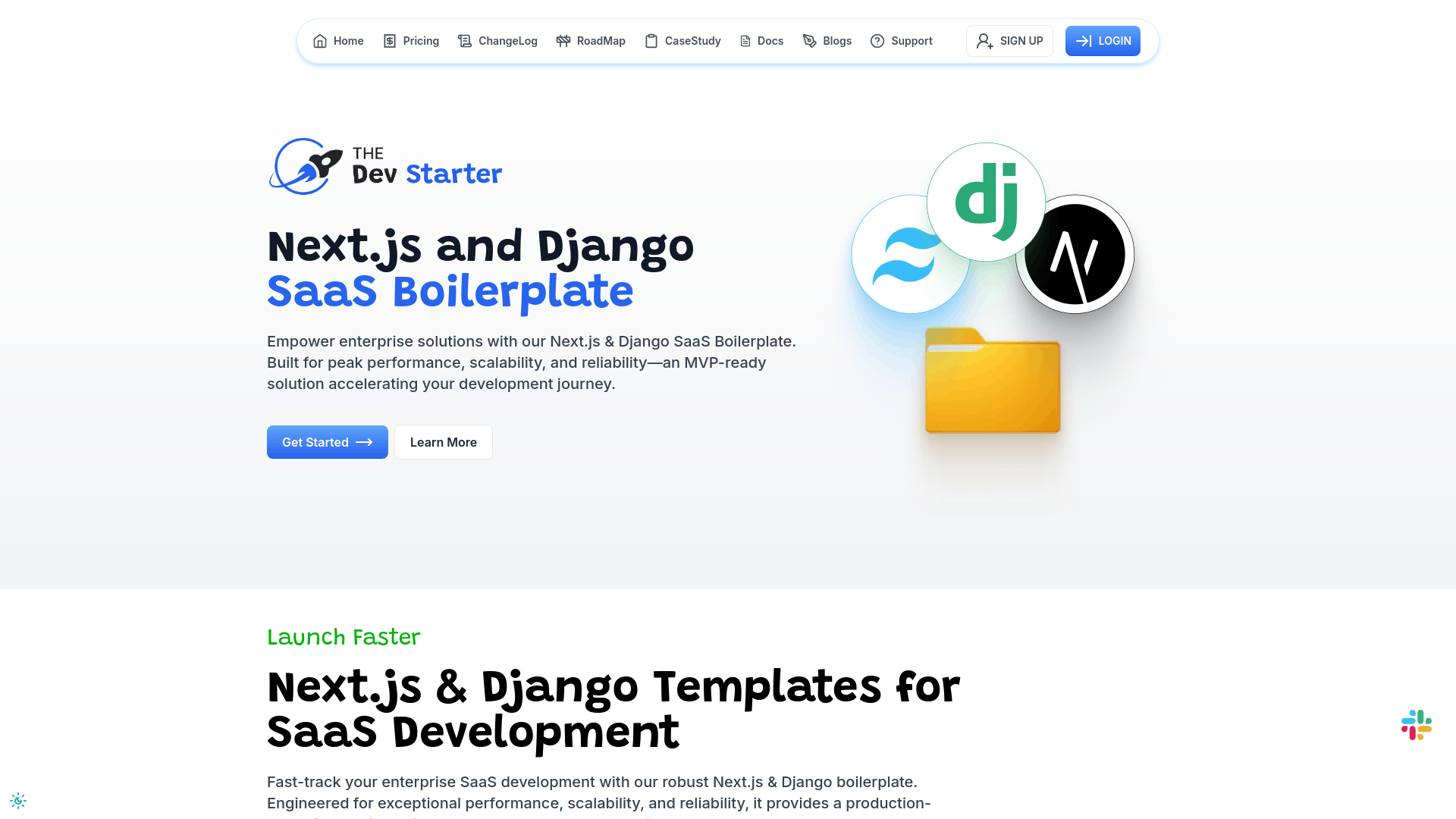
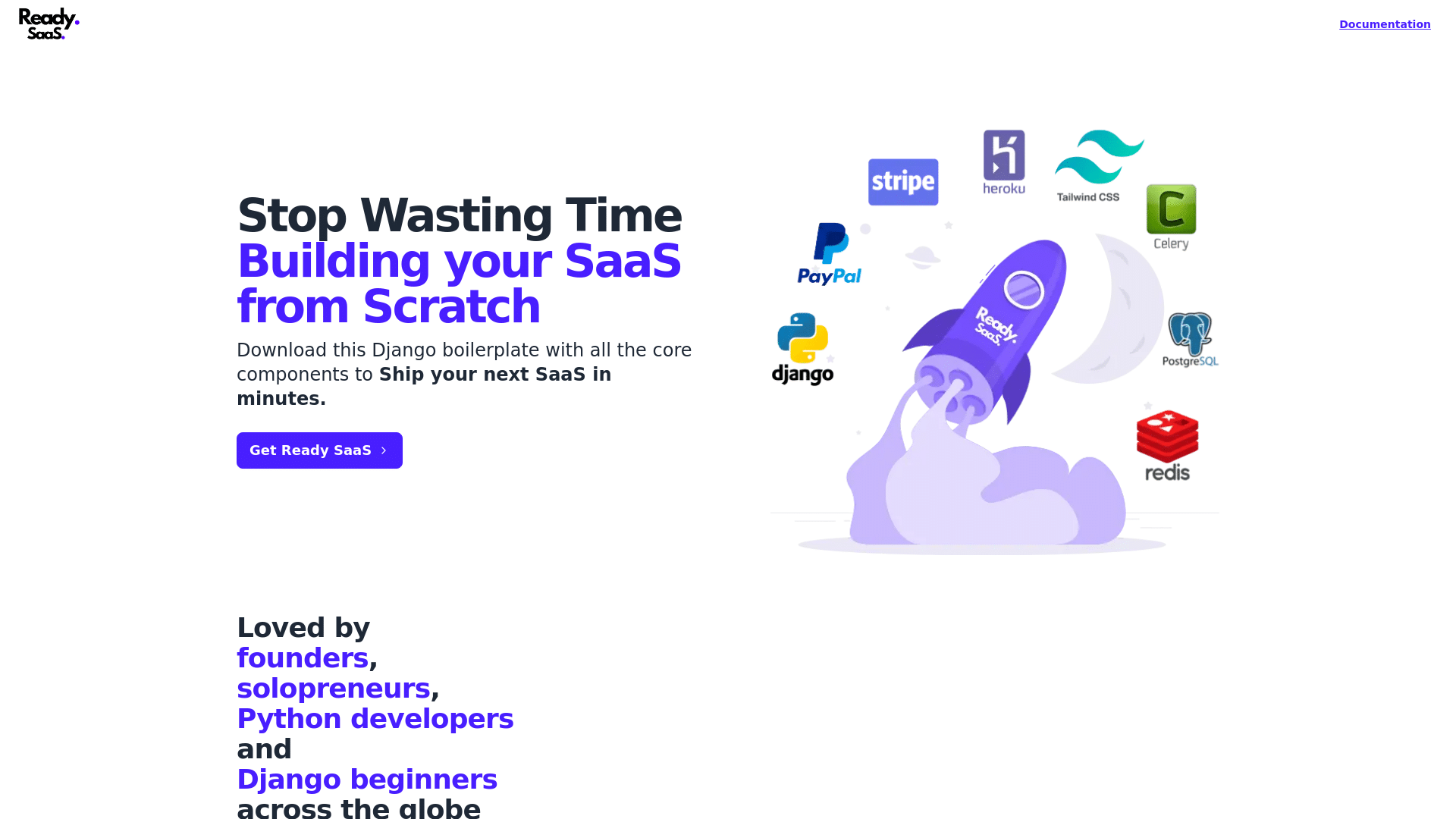
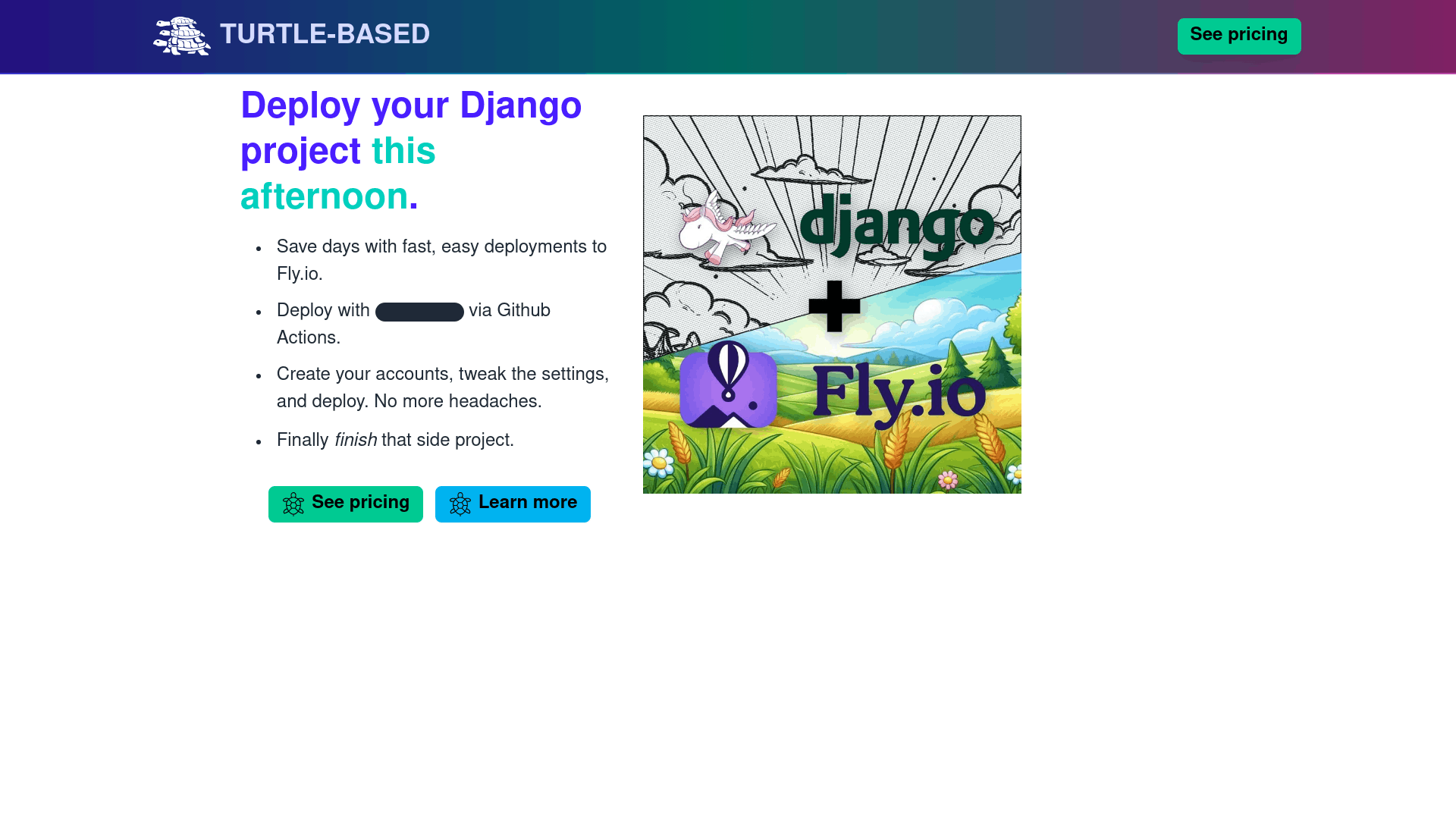
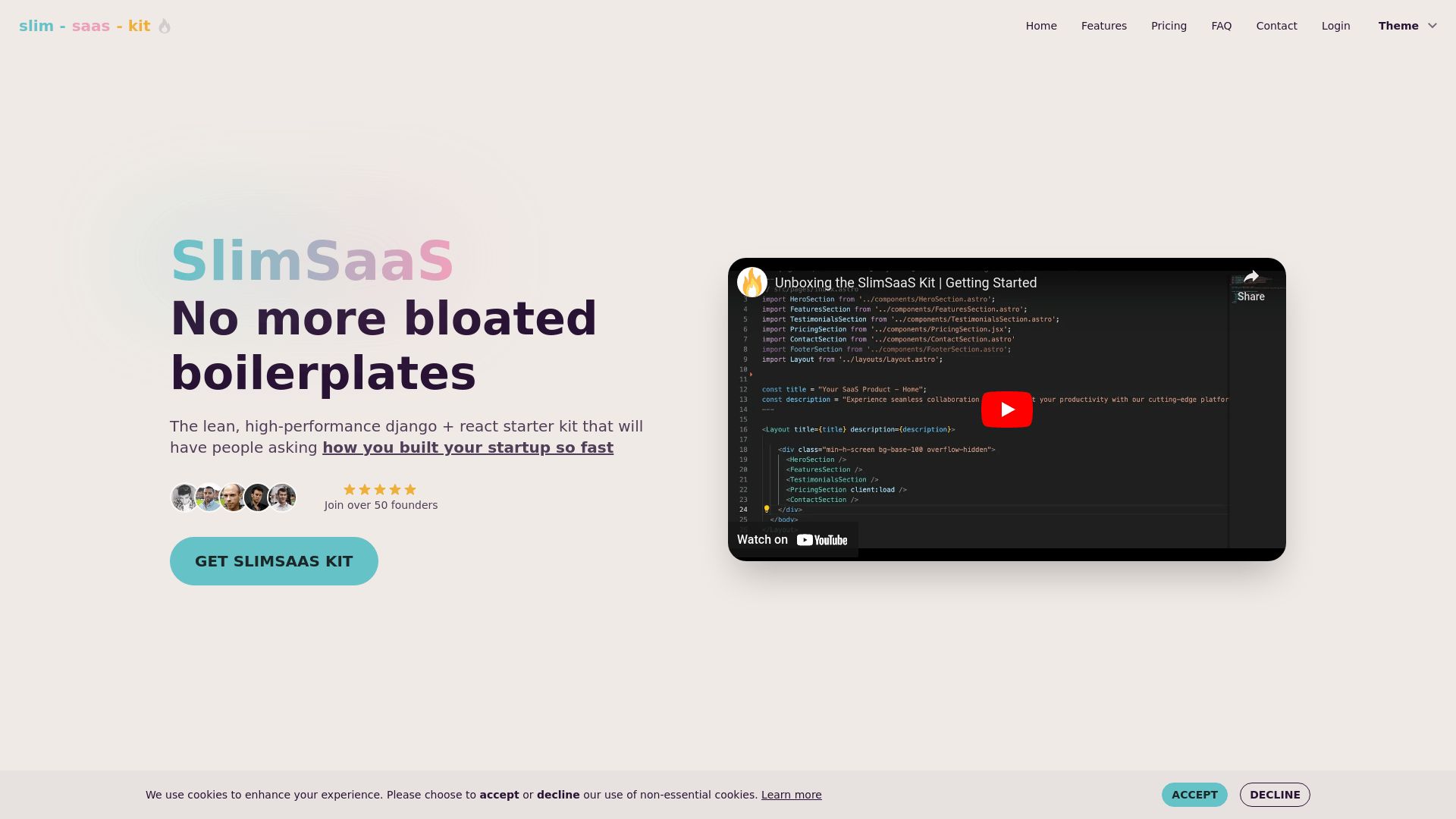
A Django SaaS boilerplate is a pre-built web application template that includes all the necessary features and functionalities for building a SaaS application using Django. It typically includes features such as user authentication, billing and payment integration, email services, and more. By using a boilerplate, developers can save significant amounts of time and effort in building these features from scratch, allowing them to focus on customizing and building the unique features of their SaaS product.
Django is a open-source web framework for Python that enables rapid development and clean, pragmatic design. It was created in 2003 by Adrian Holovaty and Simon Willison and was first released publicly in 2005. With over 72k stars on GitHub and 10,012 live websites, Django is a well-established and actively maintained framework.
Django's core philosophy is to encourage the rapid development of web applications with reusable and pluggable components, making it a popular choice for web developers worldwide. If you're looking to build a SaaS product using the Django web framework, you might want to consider using a Django SaaS boilerplate to speed up your development process.